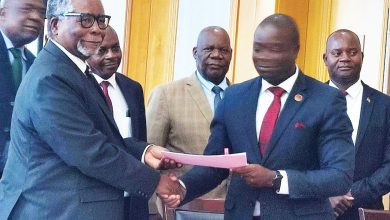Getting rural masses on internet

Minister of Information and Civic Education Moses Kunkuyu says Malawi government has put in place mechanisms to improve service delivery in rural areas through the provision of basic information and communications technology (ICT) services through telecentres.
With news that, in two years, about 43 telecentres have been established across the country, there is a reason to smile. In fact, the development augurs well with government’s dream of establishing a telecentre in each constituency.
However, it is one thing to establish telecentres and another to get the targeted rural people to access them. The challenge is that most rural people are not computer literate, making it difficult for them to access the services and even the few that are literate get frustrated with increased poor Internet connectivity.
According to Charles Nsaliwa, Malawi Communications and Regulatory Authority (Macra) director general, currently, the teledensity for conventional Internet stands at five percent, meaning one out of every 20 people have access to Internet.
But even this five percent struggles heavily to access fast and consistent Internet services due to poor connectivity in the country. This could be one of the factors behind Malawi’s poor showing at this year’s global ICT index.
The report by the World Economic Forum Global Information Technology Report (GITR) indicated that the country has slumped by an overwhelming 13 steps on ICT uptake, moving from position 116 last year to 129 out of 144 economies.
However, according to Nsaliwa, while customers might rightly have pessimistic views about the country’s network availability, it should also be borne in mind that a number of factors affect network performance, some of which might be outside the primary communication domain i.e. power availability.
“It is acknowledged that high-end ICT services and applications require broadband connectivity for them to be fully realised. Being a landlocked country, Malawi has always suffered high costs of international connectivity while using satellite technology as it could not access the high capacity submarine optic fibre cables that land along the Indian Ocean coast.
“However, through various initiatives such as the Regional Communications Infrastructure Project (RCIP), the country is investing in reliable broadband capacity through optic fibre connectivity to the various landing points so as to provide reliable and affordable services,” he said.
Deputy principal secretary in the Ministry of Information, Harold Perekeni, said at the opening of a training workshop on white spaces in Blantyre recently that it is encouraging to hear the emergence of technologies such as the white spaces that are able to bring broadband (fast and reliable) internet connectivity to the public, especially key development sectors such as public education and health institutions.
“The introduction of the white spaces project, therefore, brings great optimism that rural and underserved areas will now have access to affordable and reliable broadband connectivity that is poised to close the digital gap in such areas,” he said.
According to Kunkuyu, government has developed a National ICT Policy that is aimed at providing direction as to how Malawi will turn the ICT potential into real benefits for its people.
“The policy also aims at putting in place appropriate institutional, regulatory and legal framework that should effectively support successful deployment and utilisation of ICT in all sectors of the economy,” he says.
The challenge, however, is that the policy only talks about deployment and utilisation of ICT in a country where a lot of people are computer illiterate. It barely addresses the computer literacy challenge. This is why, in this case, Malawi needs to learn from the success story of Rwanda, which is Africa’s success story of ICT development in rural areas. While addressing the Geneva World Summit on the Information Society (WSIS) in 2003, president Paul Kagame of Rwanda did not mince words.
“Access to information is a human right and should be treated as such. Institutions should do everything they can, and all actors should pool their efforts to ensure that right. All sectors have to bear responsibility,” he said.
To implement that, in 1999 Kagame put in place a strong ICT policy and an education sector policy which underlined that ICT is ‘the heart of the education system’.
Such a policy environment necessitated the introduction of ICT-oriented projects that continue to be implemented in education. Apart from the One Laptop per Child (OLPC) project—which involves distribution of small, green laptops to primary school pupils—there is Rwednet, whose expected outcome is the development and promotion of research and education networking communities in and outside the country.
Perhaps Malawi should follow this path—exposing pupils to ICT services at a young age to improve computer literacy and ensure that the rural telecentre are being utilised by the targeted rural people.





